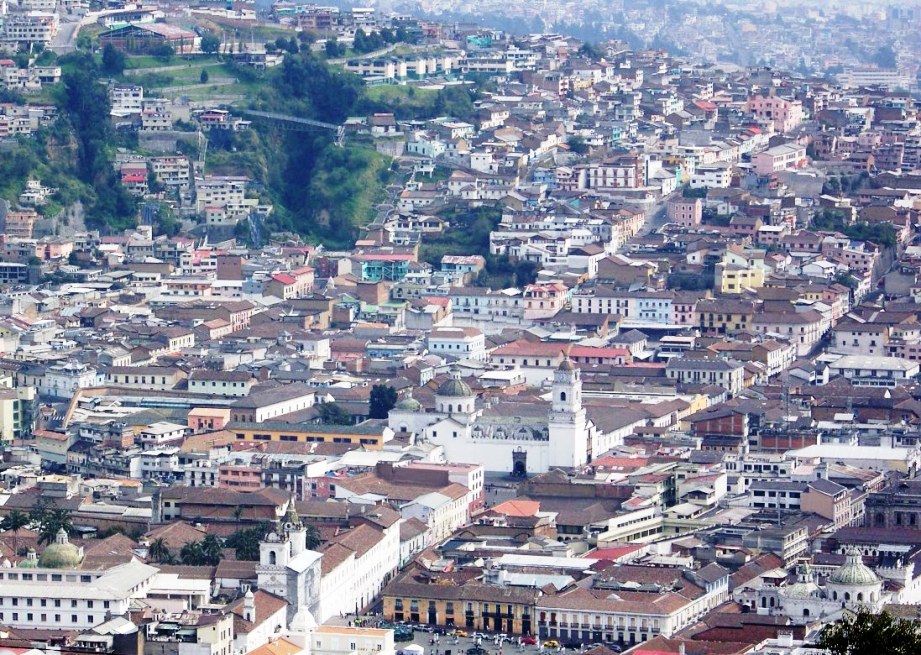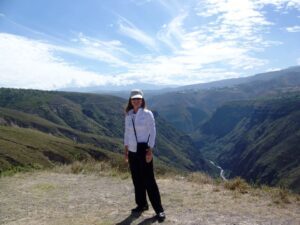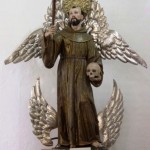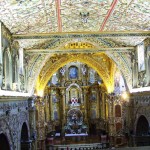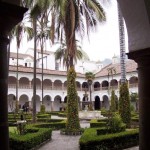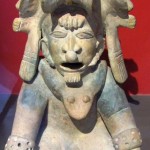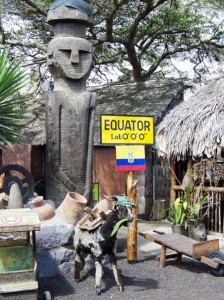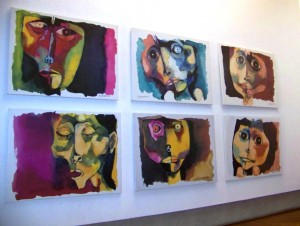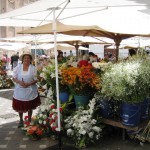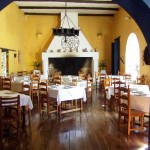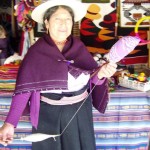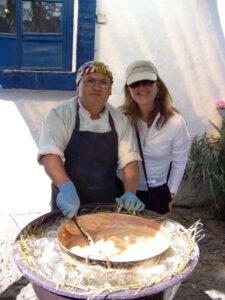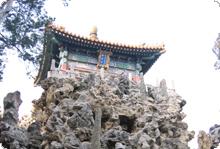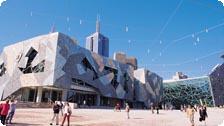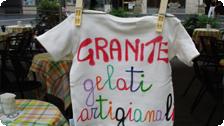A Two Part Series of Discovery (Stay-Tuned)
My first visit to Ecuador was nearly eight years ago. My trip at that time focused on experiencing the magnificent Galapagos Islands on Ecuador’s Pacific Coast; the islands are truly an eco-paradise, easily one of the world’s greatest treasures that should be on everyone’s bucket list. But Ecuador is blessed with dazzling diversity that spans beyond its celebrated coastline; four natural regions – so close yet so different – from the snow-capped Andean Mountain Range to the lush tropical rainforests of the Amazon. Sadly, my Galapagos tour schedule only allowed for a quick overnight in Guayaquil, Ecuador’s coastal capital city. My hope was to return one day and travel inland and north to the volcanoes and to Ecuador’s core to revel in the regal beginnings of this spirited yet humble nation. A land once ruled by the Incan Empire and later conquered by European powers, Ecuador is a distinctive destination with an impressive cultural and natural legacy guaranteed to engage and enlighten!
I returned to this charming harmonious country in late October and discovered the culture, cuisine and history of two of Ecuador’s celebrated Andean mountain cities –Quito and Cuenca. These magical colonial cities share a colorful past representing over four centuries of traditions and ethnic influences that have shaped present day Ecuador and its people.
Part 1: Quito – the second most populated city in Ecuador after Guayaquil and the second highest capital city/administrative seat (9200 feet) in the world. .
Fast Fact: Quito joined Krakow, Poland as the first World Cultural Heritage Sites declared by UNESCO in 1978
The heart of Quito’s Colonial City, said to be the largest and most well-preserved old town in Latin America, is Independence Square or Plaza Grande. The square is host to the city’s most impressive historic landmarks. Here you will find the Presidential Palace, the Cathedral, the Archbishop’s Palace and City Hall. Amazingly, the founding fathers gave careful thought to the city layout; the heritage buildings were strategically built over the sacred worship sites of ancient Pre-Columbian civilizations. Visitors are easily awe-struck by the imposing architecture above ground as they are intrigued the mysteries that lie beneath. Allocate a minimum of three hours to explore the Old City treasures – all within easy access by foot from the Plaza Grande. Tour highlights include:
- San Francisco Church and Convent – a magnificent stone compound, erected by the Spanish, consisting of seven cloistered buildings dating back to 1536. The complex is now home to museum of religious artwork.
- La Compania de Jesus – construction of this exquisite Baroque church took 160 years; recent renovation spanned 18 years. La Compania is a true masterpiece inside and out. Intricate stonework carved by Ecuadorian native artisans adorns its exterior. The interior is a heavenly tribute; the church walls and ceilings, dressed in seven tons of gold leaf, glimmer against the candlelight.
- La Merced Church– a vision in white with its grand bell tower (the highest in Colonial Quito) and Moorish inspired architecture. Many of the celebrated works of Víctor Mideros, one of the greatest Ecuadorean painters of the 20th century, are displayed throughout the church.
- Casa Del Alabado –Quito’s newest museum dedicated to Pre-Columbian Art located in a beautiful historic colonial building near San Francisco Church.
- La Basilica – one of the largest churches in South America. The church, which took nearly 100 years to complete (first stone laid in 1882), is a stunning example of Neo-Gothic architecture with an Ecuadorian twist. Church spires feature gargoyles inspired by local fauna – armadillos, iguanas and tortoises. Travel up the main church tower for spectacular views of Quito and the surrounding mountain area. Hungry after the near 380 foot climb? No worries…visitors can stop and enjoy a lunch and a rest on the way back down at the Basilica’s café.
- Museo de la Cuidad – a charming museum, housed in Quito’s oldest building, is dedicated to the history of Quito. The museum’s impressive collections showcase artifacts from the Pre-Columbian time to present day.
Quito’s colonial past comfortably coexists with Quito’s cosmopolitan present. La Mariscal, fondly known as “La Zona” is considered Quito’s epicenter for entertainment. The Mariscal neighborhood, less than 30 minutes from the Quito airport, is the place for nightlife, dining and lodging. But, take note… a party pulse comes with a price. If you looking for quiet relaxation, choose a hotel property far from La Mariscal’s main square – Plaza Foch – or opt for a hotel in the historic colonial city center.
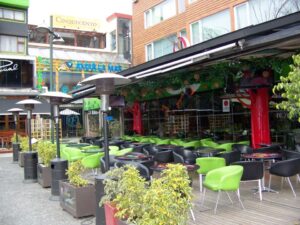
No visit to Ecuador would be complete without a journey to Middle Earth better known as the Equator. In fact, the country’s name alone is inspiration enough for the expedition; Ecuador is Spanish for Equator.
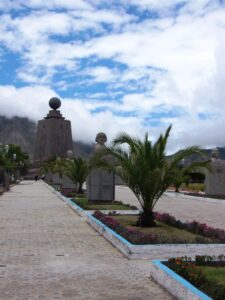
Quito’s city center is only 16 miles south of the equator line so a visit to La Mitad del Mundo monument and ethnographic museum is a must! But be forewarned, there seems to be great controversy around the actual location of the line. The Intinan Solar Museum, a private attraction located minutes from the towering 98 foot La Mitad del Mundo monument, claims to mark the real spot.
Convincing Intinan tour guides present visitors with astounding evidence via the form of whimsical challenges and demonstrations – like balancing an egg on one end to predicting the directional flow of water down a drain – to set the record straight. This will be your opportunity to divide and conquer – one foot at a time over the line in each hemisphere without effort.
And don’t miss the head shot of a lifetime; the Intinan Solar Museum features a unique educational exhibit that showcases the barbaric ritual of headhunting with a series of picture boards and actual shrunken heads.
(A scary thought: the practice was still prevalent in the world as late as the 20th Century.)
If time allows, a stop at the La Capilla del Hombre (Chapel of Man), located 10 miles from La Mitad del Mundo, is highly recommended. The museum, a stone replica of a pre-Columbian pyramid, houses the murals and sculptures of renowned Ecuadorian artist, Oswaldo Guayasamín.
The paintings focus on a disturbing subject matter – human suffering. Each work offers an emotionally-charged glimpse into the daily life struggles of the indigenous Latin American people. An eternal flame on the lower level of the museum burns brightly to bring attention to the critical mission of protecting human rights. La Capilla de Hombre leaves visitors with a feeling of renewed hope and a deeper understanding of the power of art in creating social change.
Delightful Diversions – Not to Miss:
- El Pancillo Hill – once the site of a Spanish fortress; now a popular vista point for tourists. A beautiful angelic aluminum statue (147 feet high) of a winged Virgin Mary towers over the hill protecting the Old City below.
- Casa Del Alabado – Museum of Pre-Columbian Art
- Plaza de los Ponchos, Otavalo – just north of Quito, one will find a bustling handicraft market. Ecuador’s finest weavers and embroidery experts sell goods ranging from alpaca ponchos to hand-woven tapestries. No middle man involved. You will be buying directly from the source. With prices as low as $6 for a handmade scarf, it is easy to practice responsible tourism and buy local to help keep traditions alive. (Fast Fact: Ecuador’s currency is the U.S. Dollar)
- Hacienda Experience – enjoy a hearty authentic Ecuadorian feast ($26 per person) at the Hosteria Hacienda Pinsaqui Restaurant. Or… why not opt for weekend of ecstasy at this legendary property. Its proximity to the artisan cities of Otavalo (textiles) and Cotacachi (leather) make it the perfect home base for local handicraft and cultural excursions. The Hacienda, built in 1790, is an extraordinary setting for rustic romance. History buffs will love its illustrious past. Step back in time and sleep in the room that hosted General Simon Bolivar – Latin America’s most celebrated hero. Enjoy an array of activities – horseback riding, mountain biking, hiking as well as cultural excursions. If the spectacular views and the superior service don’t convince you…a taste of the Hacienda’s famous homemade Ecuadorian ice cream will!
- Flower Markets – Roses are a top export. You will find the greatest selection of flowers on almost every street corner. Travel outside the city to the Otavalo (Imbabura province) for plantation and greenhouse tours. Here premium roses sell for as little as 20 cents per stem. Note: you can pick up a dozen of fresh roses (packaged for flight) at the airport for only $12-$15.
Lodging:
Casa Gangotena – luxury historic boutique property located in the heart of the OldCity. 29 Rooms/4 Suites. Rates: $375-$750 per night
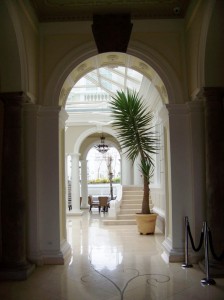
NU House Boutique Hotel– an intimate modern property in the heart of La Mariscal. 52 Rooms/5 Jacuzzi Suites. Rates: $109-$189 per night
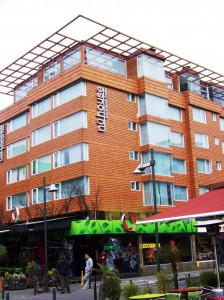
Hosteria Hacienda Pinsaqui – elegant historic country estate located in Ecuador’s lake district offering spectacular views of the countryside and volcanic mountains. 1.5 hours from Quito. 30 Luxury Suites. Rates: $105-$169 per night
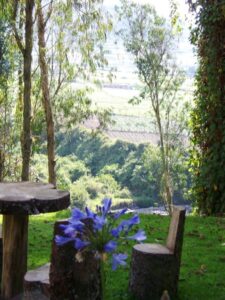
El Crater Hotel – a unique hotel at the edge of a crater in one of Ecuador’s most magnificant bio-diverse areas – The Pululahua Geobotanical Reserve. The crater is said to emit a positive energy force from the earth making El Crater Hotel a truly spiritual and mystical destination. The crater is a bird lover’s paradise and also home to over sixty species of orchids. When the misty fog of the bordering rainforest rolls in, the setting is surreal! Ten minutes from La Mitad del Mundo. Thirty minutes from Quito. The hotel’s award-winning restaurant is a gastronomic delight featuring authentic regional dishes. 12 Suites with views. Rates: $70-$145 per night
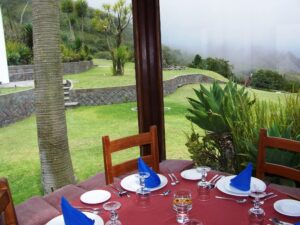
For more information and travel planning assistance, contact the Quito Visitors Bureau or call the Trade Office of Ecuador in NYC at 212-719-2220.
